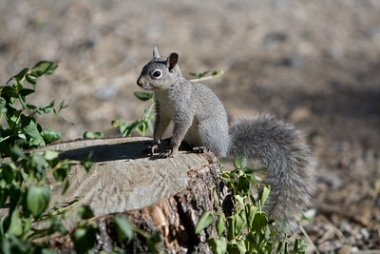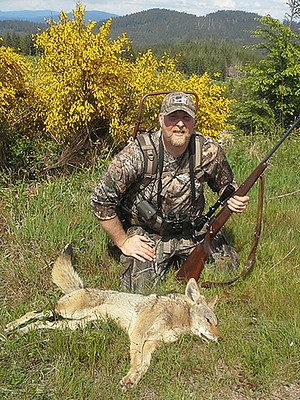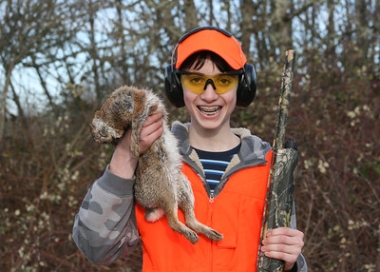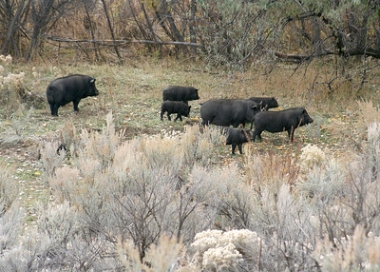
Small game hunting in Oregon
Small game species provide a variety of hunting experiences throughout the state and are an excellent way to introduce new hunters to hunting. Only the appropriate hunting license is necessary to hunt small game (no tags or permits). There are three major categories of small game in Oregon: western gray squirrel, unprotected mammals and furbearers.

Western gray squirrel
The western gray squirrel is Oregon’s smallest “big game” mammal. Unlike other big game mammals, you don’t need a special tag to hunt, just a regular hunting license, and there are few weapons restrictions. Western gray squirrel can be shot with any rifle, handgun, shotgun, non-matchlock muzzleloader, or long, recurve or compound bow.
But like other big game mammals, there are specific seasons, bag limits and open areas for squirrel hunting.
North – central Oregon
Open season: Sept. 15 – Oct. 31.
Daily bag limit: 3.
Possession limit: 6.
Open area: Wildlife management units* 34, 35, 49, 41, 42.
Rest of the state
Open season: Sept. 1 - Nov. 15.
Daily bag limit: 5.
Possession limit: 15.
Open area: Wildlife management units* 10-33, 36-38, 40, 43-77.
Exception: No bag limit or closed season in that part of Unit 30 south of the Rogue River and South Fork Rogue River, and north of Hwy 140.
*Find a map of Oregon’s wildlife management units
Unprotected mammals
These mammals are not protected under the game animal, furbearer or sensitive species rules. Commonly hunted unprotected mammals include coyote, cottontail rabbits, black-tailed rabbits, opossum, nutria, California ground squirrel and Belding’s ground squirrel.
- A hunting license is required and all hunting rules apply.
- Hunting is allowed year-round and there are no bag limits.
Coyote
Both mouth-blown and electronic calls are legal. If you’re calling coyote and are interested in taking a bobcat, fox, bear or cougar that may respond to your call, you need an addition license or tag.
- You’ll need a tag to take a bear or cougar.
- You must have a Hunting License for Furbearers to harvest a fox or bobcat. Bobcat also requires a Record Card.
Ground squirrels
Belding’s ground squirrels: In eastern Oregon, these medium-size ground squirrels (often called “sage rats”) are typically hunted from February to July, when they return to their burrow to spend the next six to eight months. Most hunting is in pastures and alfalfa fields, so you’ll need to get permission from the landowner to hunt.
California ground squirrels: Often called “grey diggers,” these ground squirrels are one of the larger ground squirrels found in western and central Oregon. While they can climb, they usually head for their burrow when startled. This helps distinguish them from gray squirrels – a protected species – that usually climb trees to escape.
Learn more about Oregon’s squirrels.
Rabbits and hares
Brush rabbits: A variety of cottontail that lives in the Coast Range, western valleys and foothills of the Cascades. You can find them feeding and sunning in open areas, but they’ll rarely be far from cover. A good hunting strategy is walking closed logging roads with overgrown vegetation, especially very early in the morning.
Mountain cottontails: Found throughout eastern Oregon, primarily in areas with rock outcrops or rimrock where they can escape through small gaps among the rocks.
Black-tailed jackrabbits: Primarily found in the most open, driest “desert” habitats of eastern Oregon. You also can find them in the dry habitat surrounding alfalfa fields, where they forage at night.
Snowshoe hares: Inhabit the mountain ranges of Oregon. Some snowshoe hares, particularly in the Coast Range, may not turn white in the winter. Few people hunt for snowshoes hares in Oregon – they tend to live at high elevations where snow limits access in the winter. In western Oregon, snowshoe hares like to escape to dense cover, much like the brush rabbit.
Learn more about Oregon’s rabbits and hares.
Furbearers
“Furbearers” are mammals that are traditionally hunted for their fur hide. They include beaver, bobcat, marten, mink, muskrat, otter, raccoon, red fox and gray fox. To hunt furbearers, you’ll need a Furtaker’s License or a Hunting License for Furbearers. To learn more, visit the Furbearer hunting and trapping page.
Feral pigs
Feral swine, often called wild pigs, are an invasive, non-native species in Oregon that destroy important habitat. Fortunately, there are very few feral swine in the state and most live on private land.
Hunters can take feral swine year-round on public lands and need only a hunting license. There are no bag limits. On private land, feral swine are defined as “predatory animals.” This means you don’t need a license to hunt feral swine on private land, as long as you have permission from the landowner to act as their agent.
See the Oregon Department of Agriculture, Administrative Rule 603-010-0055 for the criteria to determine if a pig is considered a “feral swine” and legal to harvest.






